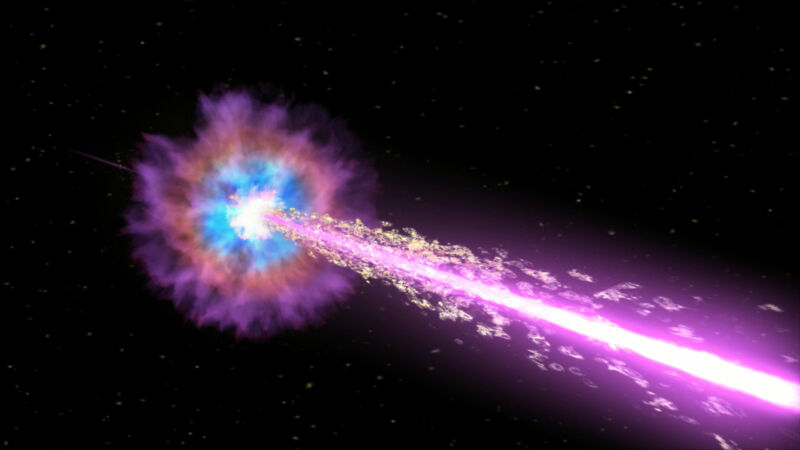The stunning gamma-ray burst, dubbed GRB 221009A, continues to amaze even though more than a year has passed since its discovery. Scientists from Italy recently published a study showing how our planet’s ionosphere was affected by its high intensity and long duration.
The ionosphere is one of the layers of the Earth’s atmosphere, and its height extends from 60 kilometers to more than 950 kilometers. It contains electrically charged plasma, and its lower half, called the underside, extends up to 350 kilometers. After 350 km the upper half is located, called the upper side.
Top side charging
According to Mirko Piersanti, a professor at the University of L’Aquila, the effects of gamma-ray bursts have been observed often in the lower side but rarely in the upper side of the ionosphere. “This is because the density and conductivity of the plasma on the upper side is much lower than on the lower side. To observe this effect as well, you need a satellite that can make observations, and is orbiting in this layer,” Piersanti said.
It so happened that such a satellite orbits the Earth at an altitude of 507 km. “The Chinese Sismo Electromagnetic Satellite (CSES), a Sino-Italian mission, was in the right place at the right time, under the illumination zone of this gamma-ray burst,” Piersanti said. “The satellite has an instrument that recorded a spike in the electric field on the upper side of Ionosphere.
The relationship between this observation and the gamma-ray burst event was not initially clear. According to Piersanti, ionospheric dynamics are usually driven entirely by the Sun. “The first thing we thought was maybe something coming from the Sun. But the Sun gave off flares that didn’t match in time with what we observed. Also, at the time, we were sure that a gamma-ray burst would never be able to generate such a difference on the top side of Ionosphere.
“However, after analyzing data from CSES as well as ESA’s Integrated Space Telescope, we have changed our mind. Now, we believe it is possible that the gamma-ray burst could impact the entire ionosphere.”
Saved by distance
While the chain of events that led to the generation of GRB 221009A (supernova explosion or black hole creation) remains undetermined, the gamma ray source is located about 2 billion light-years away, a significant distance from our Milky Way Galaxy.
According to Piersanti, if such a distant event could cause significant disruption in the relatively less conductive part of the ionosphere, then an event occurring in our galaxy (which is 100,000 light-years across) could cause damage to Earth’s ozone layer.
“I have not seen the ozone layer data, but this gamma-ray burst has the potential to disturb the ozone layer. In fact, with the help of statistical analysis, we are working on the possible effects that gamma-ray bursts like GRB 221009A could have on the ozone layer. He added: “We “We’re also creating a table of previous gamma-ray bursts and ozone layer observations and trying to see if they match.”
Nature Communications, 2023. DOI: 10.1038/s41467-023-42551-5
Dhananjay Khedilkar is a journalist based in Paris.

“Extreme travel lover. Bacon fanatic. Troublemaker. Introvert. Passionate music fanatic.”







More Stories
A fossilized creature may explain a puzzling drawing on a rock wall.
MrBeast Sued Over ‘Unsafe Environment’ on Upcoming Amazon Reality Show | US TV
Watch comets Lemmon and SWAN approach Earth today